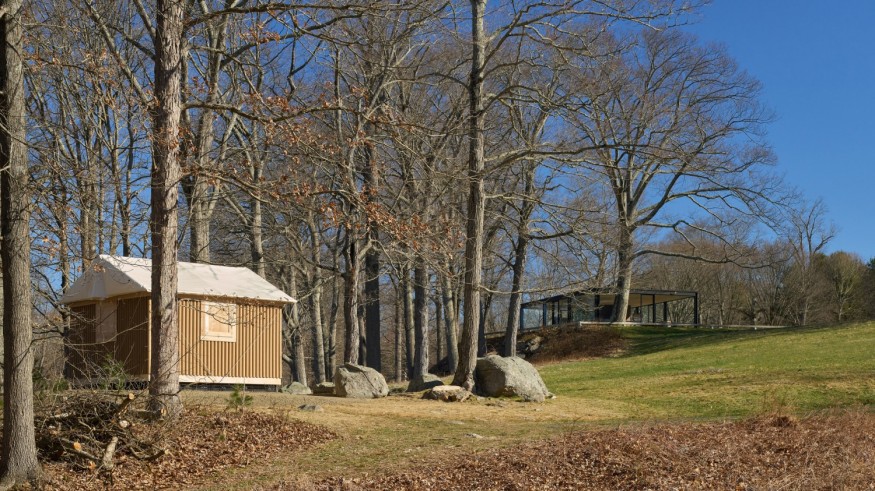Shigeru Ban Unveils Paper Log House and Commemorates 75 Years of Philip Johnson’s Glass Home

Shigeru Ban, a Japanese architect, has become famous for his construction of an inspiring pavilion from folded paper tubes, wooden blocks, and milk crates on the 75th anniversary of the Glass House, USA's fabulous creation of his American colleague Phil Johnson, who lived and worked in Connecticut. The process was made much quicker and smarter because of our partnership with students from New York University's Cooper Union. This led to creating a 14 ft. x 14 ft. structure inside the historical area of Johnson's revolutionary home.
The Legacy of Johnson's Glass House
It remains a legacy of architectural mastery with Johnsons' Glass House, built in 1949 in New Canaan, Connecticut. Serving dual purposes as a haven for privacy and a statement on the cutting edge of architecture, the structure's facade adopted a complete glass envelope cased within the charcoal-colored metal frame. This perspective will leave many viewers in disbelief.
The Paper Log House, for which Ban is distinguished, is exemplary of how creativity and sustainability can be revealed through the murkiness of glass materials. Designed as an assembly of 156 recycled cardboard tubes reinforced by a plywood frame comprising a 39-crate-based foundation, the pavilion represents Ban's commitment to expanding the realm of building materials and innovative construction methods.
Collaboration and Construction
The group represented the Aluminum Composite Panel House. This group consisted of students, professors, and specialists from Shigeru Ban's Design Bureau, who worked endlessly for 15 hours and brought Ban's vision to life at the Glass House estate. On the other hand, the new installation, commissioned by the trust that manages the grounds of Glass House, reflects the ongoing pursuit of fresh ideas, as well as the tradition of modern materials and innovative design, which was the trademark of Johnson, a man who dedicated his life to pushing the envelope.
Kirsten Reoch, executive director of The Glass House, expressed enthusiasm for Ban's contribution, stating, "The Paper Log House continues this ethos of experimentation and innovation, turning Ban's creative energy toward the solution of urgent social problems with recyclable and easily available materials."

The reputation of Ban for his involvement in sustainable architecture has always been discussed among architects; the history of Ban's cardboard-based and non-uniform architecture spans over three decades. The Origin of the Paper Log House was drawn up after the 1995 Great Hanshin earthquake, which has existed for over twenty years and has provided temporary shelters, community halls, and education centers in disaster-affected regions worldwide.
Honoring Johnson's Legacy
Through the assembly of Ban's pavilion on the Glass House, the legacy of Johnson is, besides other things, being honored. Moreover, the innovative design to address the contemporary challenges is the thought and the notion that crosses one's mind. Ban's creation directly contradicts Krebs's stated Glass House, which plays a great role in highlighting architecture's ability to shape and respond to the changing needs of the sty.
Philip Johnson's architectural legacy continues to tow lofty heights, essential as it showcases his fingerprints in some of the most renowned buildings and structures worldwide in the modernist and postmodern genres. By the Ban's Paper cube, which immortalizes Johnson's idea, one never forgets that the land of experimentation and innovation exists, and it may always do so because the spirit of new constructions is acting and reacting on its own already.
Related Article : Guemes Island Bunkhouse and Its Eco-Friendly Design Journey













